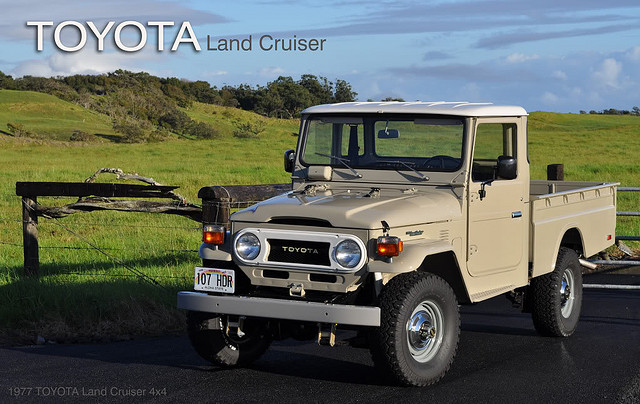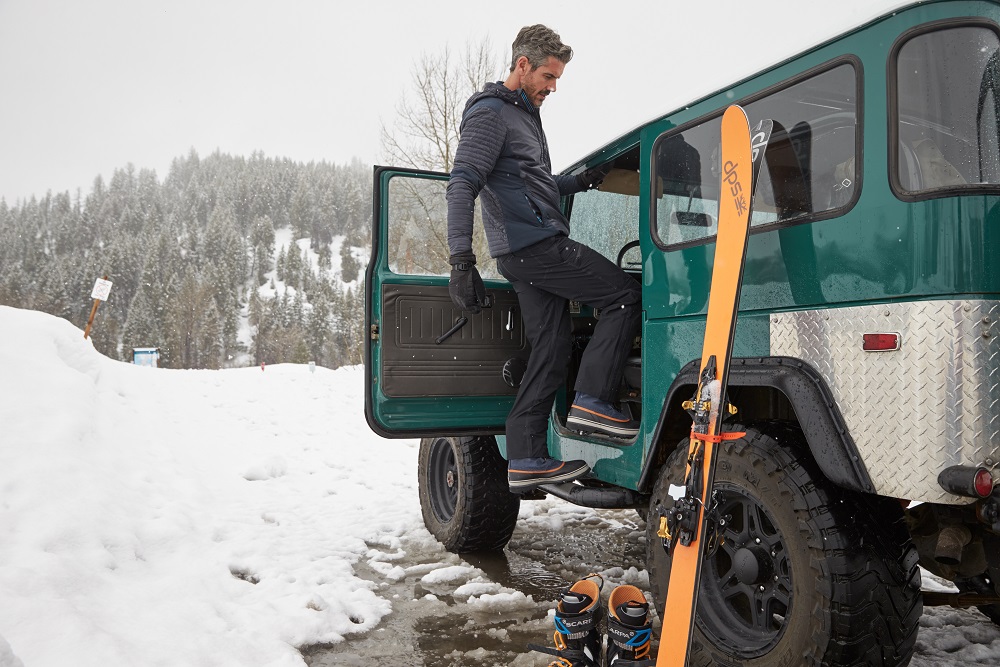
The Contemporary Ski Bum: An Adventure Nomad on the Road
If you enjoy Land Cruiser of the day. Please consider clicking through to today’s sponsor KUHL clothing company. Not only does it help this site keep going…you never know what cool gear you might find on sale. Thanks! Benjamin.

By Kühl Editor on February 21, 2019
I grew up hearing stories about my uncle’s ski bum days, when he put off college for a few years to work menial jobs all summer, and in the winter, live out of his beat-up, mid-’80s Westfalia van. He’d spend Thanksgiving with our family in LA, and then head to Tahoe, Salt Lake City, or Telluride to live the austere life of a monk, worshipping the Gods of Powder.
My brothers and I were old enough to appreciate his stories of making tomato soup from ketchup packets swiped from McDonald’s, trading six-packs of Natty Light for the privilege of showering at a lift operator’s apartment, and the nights he was sure he’d freeze in his uninsulated vehicle—which, by the way, he named Rocinante, for Don Quixote’s old gray nag.
My parents called him an idiot. We called him our hero.
Twenty years later, he’s settled down with a family of his own, a degree on his wall, and knees (and a schedule) that only permit him a weekend or two at Mammoth Mountain. But, I’ve taken over the wheel.
Now that gigs mean lucrative, remote-work contracts rather than minimum-wage jobs bussing tables or cleaning toilets at summer-only theme parks, those of us who live for our outdoor obsessions have options. And thanks to skyocketing rents, insane down-payments, and high interest rates, those of us who opt to live in a van down by the river aren’t always living hand-to-mouth. Most of us are balancing the desire to live “footloose and fancy free” (as my grandpa calls it) while actually gaining traction with our savings so we can live a settled life down the road.
To do that, you can’t just go out and buy a 40-foot diesel-pusher RV. At least, not one that doesn’t need a ton of work and, possibly, the services of a biohazard cleanup company. In my case, and that of thousands of other van dwellers, a low profile is key to minimizing campsite fees and gas bills, and increasing your access to the most gorgeous spots in North America.
I’ve been doing this for three years. While I could probably write a book on the subject, I’ll boil it down to the questions I’m most often asked when I encounter new friends on the road, focusing on what it’s like to live in a vehicle that fits in a standard parking space.

What’s the best rig for full-time van dwelling?
There is no “best,” only “best for you…and your budget.” Commercially-produced Class B camper vans—those typically built on Sprinter-style chassis—can cost as much as $175,000 brand-new, and they’re still wildly expensive as used vehicles. Most of them look like RVs, blowing your cover if you’re planning on spending the night in urban or suburban areas.
But bare-bones Sprinter or Econoline-type vans, when purchase second-hand from a fleet dealer, aren’t too difficult to insulate and build out for pennies on the dollar. Or, you can hire someone to customize a van to your specifics without paying luxury prices.
Volume, performance, and amenities are subjective, but I’d advise people to purchase a vehicle that, from the outside, looks fairly new, well-maintained, and clean; gets good gas mileage; and is in the best operating condition you can afford. The suspension should be sturdy enough to support your amenities and improvements, and ideally, have enough ground clearance to navigate moderately neglected back roads.
I lucked out and purchased a 2003 low-mileage Pleasureway van from an older couple who drove it from Portland to Arizona and back once a year for a decade before mothballing it. It’s obviously an RV, but it looks new and “respectable” enough that I can park it in most decent neighborhoods without raising too much suspicion. The downside? I’m a female, which means I have to take greater care in not advertising that I’m sleeping in there alone. If my “Spidey-senses” start tingling, though, all I have to do is climb into the drivers’ seat, pull down the reflective windshield screen I use for privacy, and nope on out of there. It’s not something I could do with a tow-behind, slide-in truck camper, or a converted box truck. A van converted from a windowless fleet vehicle might give me more urban camoflauge and thus, more options for “tactical camping,” but I’m over the moon with my setup. Not everyone wants to take on their own customization project, and few people land the kind of sweet deal I got on my van.
How does all your stuff fit?
Obviously, I had to do a lot of downsizing to fit all my necessities into my van’s storage cabinets, nooks, and crannies. Deciding what’s essential is a trial-and-error process, but I certainly don’t feel deprived for living a relatively Spartan lifestyle. In fact, quite the opposite. Here’s a breakdown of the stuff I keep with me, and how I make sure it earns its place.
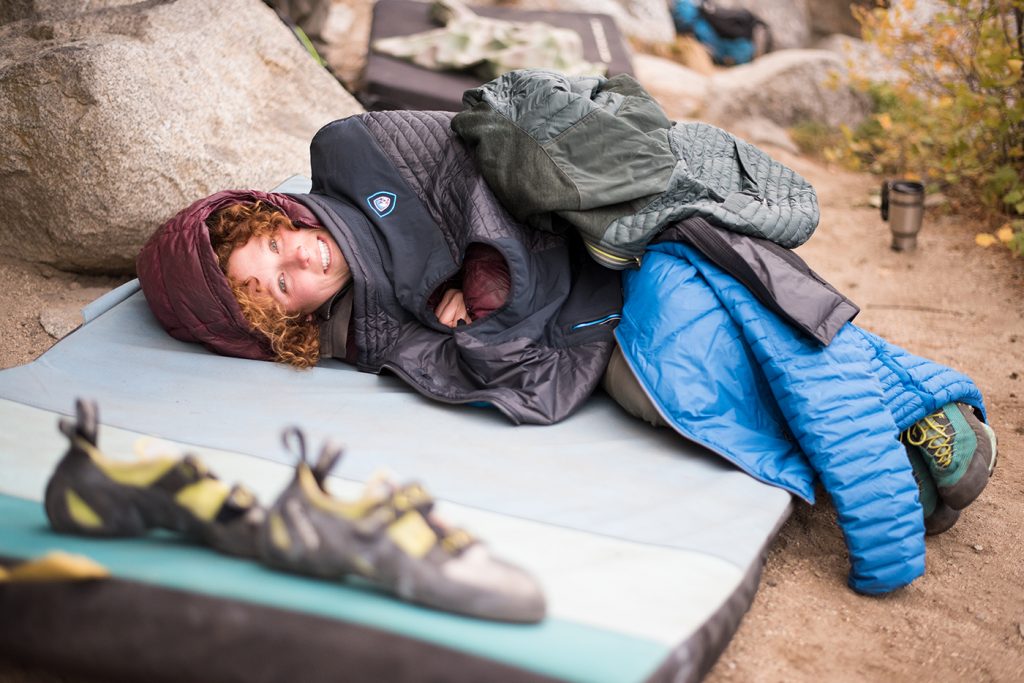
Clothing
I’m a woman who loves clothes, so I had to develop a wardrobe that truly earns its onboard space. I need pieces that stow well without wrinkling, and look great whether I’m on the trail, at social functions, or at casual client meetings. They need to stand up to being stuffed into compression sacks (which, by the way, also serve as lounge pillows) and hopefully be stain-resistant.
I do rotate my wardrobe according to season. If I’m nowhere near “home base”—my best friend’s house in Seattle, where I keep those items I just couldn’t bring myself to Craigslist or add to the Salvation Army pile when I downsized—I ship a box of seasonal stuff to her, and she ships a carton of clothes to my next destination. It’s not that much different from the resupply strategy thru-hikers use on the Pacific Crest, Appalachian, and Continental Divide trails, and really, there’s not much to exchange.
Every van dweller has their lists. Here’s my typical wardrobe “load-out” based on my favorite cold-season activities (snowboarding, snow shoeing) and warm-season (fly fishing, hiking, inflatable kayaking) needs. I’ve noted the former with “C”, and the latter with “W”.
- 1 Down jacket (C, W)
- 1 Windproof, waterproof shell (C, W)
- 3 Merino wool base layer sets
- 1 Pullover mid-weight fleece sweater (C, W)
- 1 Zip-up hooded medium-weight fleece sweater (C, W)
- 2 Pair pocketed hiking pants (W)
- 2 Pair shorts (W)
- 1 Pair ski/snow pants (C)
- 7 Tee-shirts and (C, W)
- 5 Tank tops (W)
- 1 Black foldable (rollable, too!) wrinkle-free cocktail-length knit dress
- 1 Ballcap (C, W)
- 1 Wool hat (C, W)
- 1 Knit scarf (C)
- 1 pair ski gloves
- 10 Pair Merino wool socks, various thickness (C)
- 10 Pair performance socks; ankle and mid-calf (W)
- 10 pair underpants (C, W)
- 3 bras (C, W)
- 1 bathing suit… love those hot springs in winter! (C, W)
- 1 pair hiking boots (C, W)
- 1 pair water booties (W)
- 1 pair shower flip-flops (C, W)
- 1 pair sandals (W)
- 1 pair neutral flats (for dressier occasions) (C, W)
- 1 pair ski boots, though these tend to fall under my “gear” list
- 1 pair Lightweight gloves (C, W)
- 1 pair Snow/ski gloves (W)
To some, this looks like a lot of stuff, but the “me” from ten years ago would feel utterly deprived with such a minimalist list. Van dwellers will tell you how simple life can be if you select high-quality, versatile wardrobe essentials with mix-and-match, low-key colors.
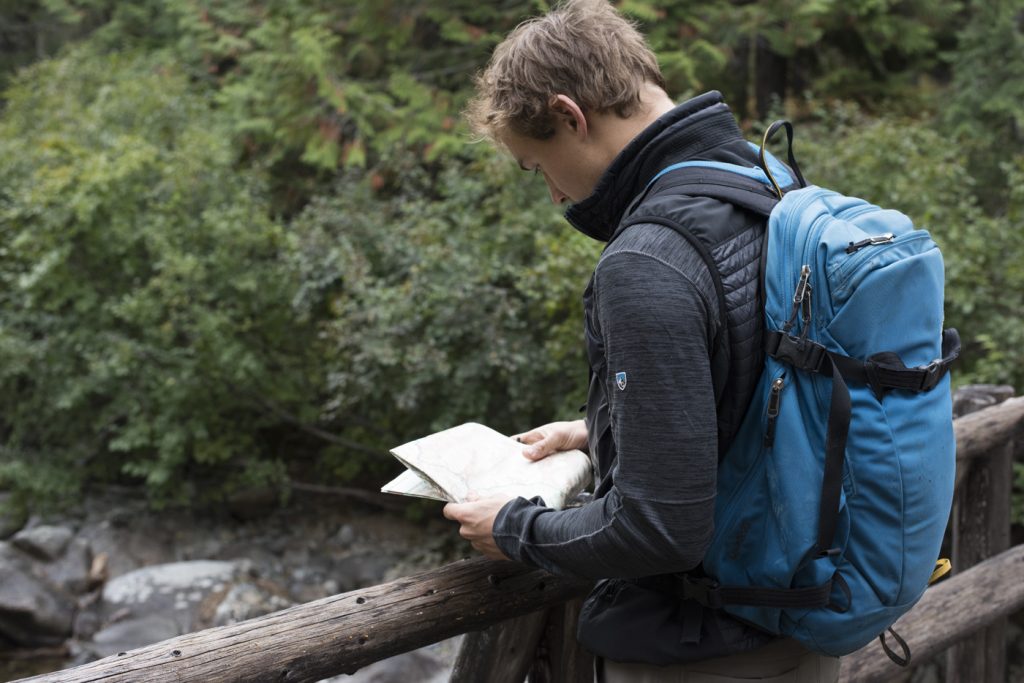
This is something I figured out the hard way: When you’ve spent the entire day hiking in the rain or boarding in the snow, you have little opportunity to dry out your clothes… and in an enclosed space, the funk can get pretty nasty. So I wear a lot of wool, which has natural antimicrobial properties that reduce odors and let me procrastinate trips to the laundromat. When things get too rank, I stow them in odor-proof bags until it’s time to crack open a roll of quarters.
Tech and entertainment
I wouldn’t be able to live the nomadic lifestyle without my Kindle, laptop, and tablet. Some of my fellow travelers use dedicated mobile hotspot devices to access the internet, but most of the time I can get away with the mobile hotspot built into my Samsung phone. You just need to be prepared to be disconnected when your cell phone provider drops out and you’re miles from the nearest Starbucks.
If you have a general idea where you’ll spend most of your time, choose a wireless provider with the best coverage in that area. If you know you’re going to spend a lot of time away from coverage, you should seriously consider investing in a satellite messenger for emergencies. If you’re a responsible backcountry enthusiast, you probably have one anyway.
Outdoor gear
Snowboards, fishing gear, inflatable hybrid kayaks, and paddle boards are easier to stow than mountain bikes and hard-shell boats but you’ll see lots of van build-outs online designed to prioritize equipment. Roof racks and hitch-mount storage are the obvious solution if you’re not worried about stealth or security, but a lot of my friends have raised up their sleeping area to accommodate more storage below, or simply live around surfboards and bikes suspended from the ceiling.
If you plan to stay in a single ski town for a while, you can usually find someone who will split a seasonal locker at the resort for all or part of the winter. This way, you can stash your boots, board, skis, and accessories, freeing up a lot of space in your vehicle. Most of my summer activities allow me to camp in public forests where I feel more comfortable leaving my gear out at night.
Do you always stay at campgrounds?
Improved campsites and RV parks definitely have their perks, though they’re usually noisy, crowded, and more expensive than they’re worth. Depending on where you go, you might have access to power, wireless internet, water, showers, and even laundry facilities. Most state-run or National Park campsites are booked months in advance, so I tend to look for mom and pop outfits whenever I can. While I feel most improved campsites and car camping facilities are safe, I genuinely feel more secure camping on a fire road spur.
Dispersed camping is camping at non-improved sites on state and federal lands, usually for no fees. Whenever you’re camping without the benefit of amenities such as power, water, or sewer, it’s called “dry camping” or “boondocking,” but the practice isn’t limited to forested backroads. RVers and van dwellers often spend a great deal of time camping on urban or suburban streets, or spending an overnight in a Wal-Mart parking lot—though in these scenarios, nobody’s pulling out their awnings and setting up their Hibachis. Most Wal-Marts, by the way, welcome “layovers” to van dwellers and RVers who don’t abuse the privilege; the Code of the Road suggests you do a little shopping while you’re there.
How do you keep up with personal hygiene?
If I’m boondocking away from civilization, I’ll use a bag-type solar shower, usually filled with water heated on my onboard propane stove. Otherwise, most truck stop showers are surprisingly clean, and many of us have memberships at national or regional gym chains. Even though I have a fully contained on-board bathroom in my conversion van, I hate the idea of showering in the same space as my toilet and I seek out alternatives whenever I can.
Do-it-yourself van builds have individual solutions for storing fresh and dirty water. Some have cartridge-style portable toilets, and others have RV-style commodes attached to black water tanks, which can be emptied for a fee at most campgrounds (with or without overnight stays) and some truck stops.
What about meals and food preparation?
I’m used to packing for flatwater kayaking and whitewater rafting trips that take the leave no trace policy to heart, stripping all outer food packaging and selecting easy-to-prep or pre-cooked meals. Much of these tricks work well for me on the road: I’m a huge fan of boil-in-the-foil Tasty Bites meals, and I sacrificed some van space to include a quality vacuum sealer in my kitchen essentials. I can spend an hour or so each week prepping and repackaging fresh meals that will more easily fit in my mini-fridge and dry-ice cooler without caving in to junk food or resorting to the bare-bones fare I survived on as a long-distance hiker.
I can only use my tiny microwave when I have shore power—the ability to hook up to an outside power source—since it will deplete my onboard batteries in no-time. I’ve easily adapted to using my dual-burner propane stove top for all my meals, though outdoor grills are a welcome opportunity for roasted veggies and steaks. Daytime picnic spots, especially those next to a great kayak launching beach, are my favorite.
One thing’s for sure: I’m not living on single-use condiments, and I can afford better beer than what my uncle drank back in the day. And—yay—box wine is way better than it used to be, and is incredibly packable!
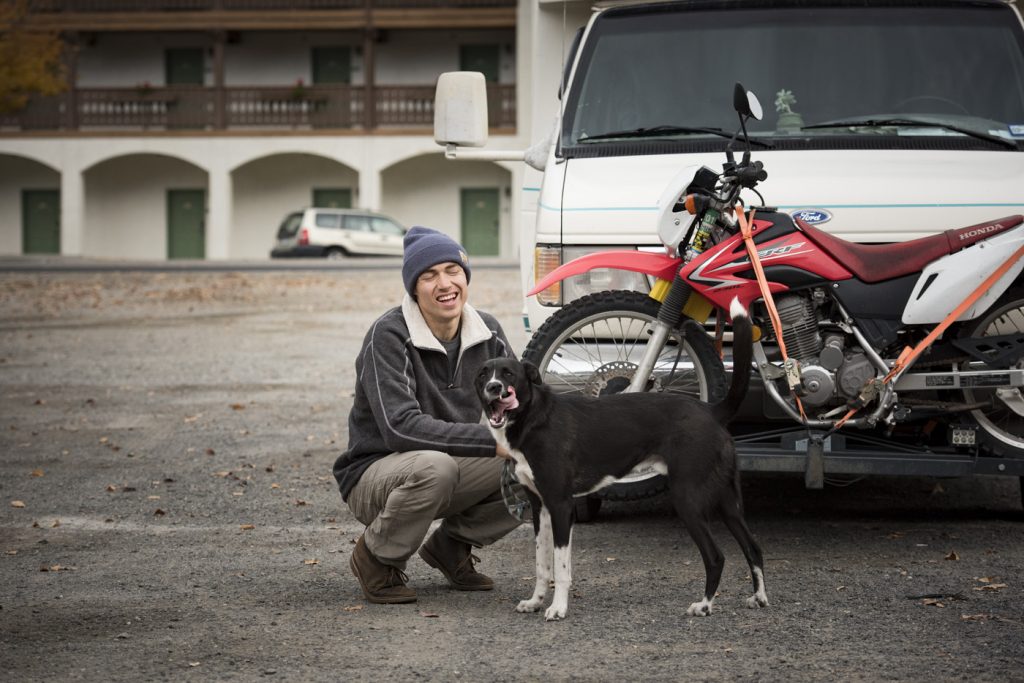
How about pets?
I don’t have any furry co-pilots right now, but many van dwellers do. The key is to keep your pet’s vaccinations up-to-date with copies of your most recent records in case you have an emergency or need kenneling and grooming services. Make sure your vehicle has a cooling system that prevents your pet from danger when you’re parked in hot weather. If you take advantage of dog parks and legal off-leash areas, your dog will likely adjust rather quickly to van living. Cats might be a bit trickier in confined spaces, but I’ve seen them at meet-ups and strolling around truck stops in tiny harnesses. You can even read about a very cat-centric van dwelling couple at Van Cat Meow.
Extra income possibilities
What if you don’t make enough with your freelance or remote work to support your nomadic lifestyle? Maybe you want to stay in a particular area for a few months without packing up your gravity chairs and hammock every few nights? You’ve got options. The Outbound Collective has a great article on working as a campground host, with links to the best job boards. Coolworks is one of my favorites.
I’ve got an account and a history of good reviews with Rover.com, and I can earn money and find a driveway in which to park while getting my pet fix. I also have experience with livestock, so I specialize in hobby farm sitting and the occasional lambing or calving season gig. Other nomads have found work as nannies, temp workers, and even day-laborers. The gig economy has something for everyone.
Adventure is all about adaptability
The van dwelling lifestyle, for those of us who live it in order to balance our work/play passions, isn’t one-size-fits-all. We can adapt our vehicles to suit our needs, and we’re always having those a-ha moments when we realize how much van life has taught us about our priorities. I wondered if I’d come to take my outdoor hobbies for granted, having so much free time and access, but really, I’ve reached a new level of gratitude for each hike, paddle, and ski run. I’ve also come to have a better appreciation for my career, since it allows me to live my life mostly on my terms.
I spend a lot of time in the unknown, where I have few social connections. It can be lonely, but there’s a thriving community of full-time RVers and van dwellers out there. And when someone I love needs me, it takes little more than a tug on the e-brake and I’m on my way. Last year, I went to California to help out my brother’s family when his wife was recovering from a pretty rough health issue. I think I made a difference in the two months I was there. But the best part? My nephews think I’m the cool aunt, and they can’t get enough of my ski bum stories.


